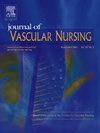Swallow evaluation tool to reduce aspiration among acute stroke patients: A quality improvement project
IF 1.1
Q3 NURSING
引用次数: 0
Abstract
Problem & Purpose
Dysphagia, a common yet often underdiagnosed neurological symptom after an acute stroke, can lead to life-threatening aspiration pneumonia. A three-month chart review at the project site revealed 42.5 % incidence of aspiration among acute stroke patients, necessitating additional intervention and cost for stabilization. Literature suggests that early dysphagia screening using a validated tool is associated with decreased aspiration and complications. However, the project site employed a screening tool that lacks validation, and completion within 24 h was <50 %. This quality improvement initiative aimed to reduce aspiration risk among acute stroke patients by implementing the Yale Swallow Protocol tool (YSP), within 24 h of admission.
Methods
Over a 15-week implementation period in the fall of 2023, the YSP tool was included in the nurses' admission bundle at a stroke-certified neurological intermediate care unit. All eligible patients screened using the YSP tool were referred to a speech-language pathologist (SLP) if they failed the test. Nurses received education prior to and during implementation. Weekly audits assessed the number of patients screened and the utilization of the YSP tool.
Result
Out of 63 eligible patients, 37 (59 %) were screened within 24 h of admission. Of those screened, 29 met exclusion criteria in step one and were referred for SLP evaluation. Four failed the water swallow test in step two and were referred to SLP, and 4 passed the screening and were cleared for regular diet. Three patients were identified with aspiration pneumonia of the 37 screened. Overall, there were 59 % compliance with using the tool.
Conclusion
YSP is a quick, easy-to-follow, and effective tool to screen acute stroke patients within 24 h of admission. Further studies should explore its implementation in other areas including the Emergency Department where acute stroke patients are initially encountered. Nurses can safely utilize the tool with ongoing education on aspiration prevention.
减少急性脑卒中患者误吸的吞咽评估工具:一个质量改进项目
问题,目的吞咽困难是急性中风后常见但常被误诊的神经系统症状,可导致危及生命的吸入性肺炎。在项目现场进行的为期三个月的图表回顾显示,急性卒中患者误吸发生率为42.5%,需要额外的干预和稳定费用。文献表明,使用有效工具进行早期吞咽困难筛查与减少误吸和并发症相关。然而,项目现场使用了一种缺乏验证的筛选工具,24小时内的完成率为50%。这项质量改进计划旨在通过在入院24小时内实施耶鲁吞咽方案工具(YSP)来降低急性卒中患者的误吸风险。方法在2023年秋季的15周实施期内,将YSP工具纳入卒中认证神经系统中级护理病房的护士入院包中。所有使用YSP工具筛选的符合条件的患者如果测试失败,则转介给语言病理学家(SLP)。护士在实施前和实施过程中接受教育。每周审计评估筛选的患者数量和YSP工具的使用情况。结果63例符合条件的患者中,37例(59%)在入院24 h内进行了筛查。在筛选的患者中,29例符合第一步的排除标准,并被转介进行SLP评估。其中4人在第二步的吞水测试中失败,被转介到SLP, 4人通过筛选,可以正常饮食。37例患者中有3例确诊为吸入性肺炎。总体而言,使用该工具的依从性为59%。结论ysp是一种快速、简便、有效的急性脑卒中患者入院24 h内筛查工具。进一步的研究应探讨其在其他领域的实施,包括急性中风患者最初遇到的急诊科。护士可以安全地使用该工具,并进行预防误吸的教育。
本文章由计算机程序翻译,如有差异,请以英文原文为准。
求助全文
约1分钟内获得全文
求助全文
来源期刊

Journal of Vascular Nursing
NURSING-
CiteScore
1.40
自引率
0.00%
发文量
33
期刊介绍:
Journal of Vascular Nursing provides clinical information regarding aortic and peripheral aneurysms, upper and lower extremity arterial disease, acute and chronic venous disease, and more. Original, peer-reviewed articles present descriptions, etiologies, diagnostic procedures, medical and surgical treatment and nursing implications of vascular system disorders.
 求助内容:
求助内容: 应助结果提醒方式:
应助结果提醒方式:


